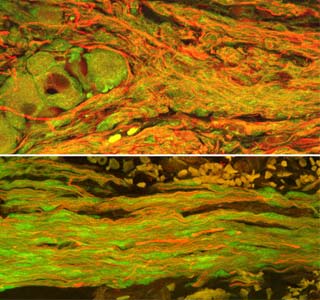
It has been stated that annually, about 300,000 Americans undergo nerve injuries. These injuries, in a lot of cases, could perhaps result in permanent loss of either the motor or sensory function or may be even both. According to neurosurgeons, these injuries may not have adequate means for repair although they are believed to be a frequent cause of trauma or surgery. Surgeons are believed to be in search for a novel and an enhanced technique of urging the nerve fibers to re-develop across major nerve injuries, so that they can re-connect the healthy targets. These nerve fibers are called the axons.
“We have created a three-dimensional neural network, a living conduit in culture, which can be transplanted en masse to an injury site,†says Senior author Douglas H. Smith, MD, Professor, Department of Neurosurgery and Director of the Center for Brain Injury and Repair, University of Pennsylvania School of Medicine.
Smith and his colleagues are said to have grown, transplanted, and integrated axon bundles with success. These axon bundles are believed to act as ‘jumper cables’ to the host tissue for the purpose of bridging a damaged nerve section.
The study investigators theorized that the living nerve-tissue construct may encourage the continued existence of the supporting cells remaining in the nerve sheath, away from the site of injury. These cells were said to be useful in the process of regeneration and are believed to be of help in the over-all structure of the nerve.
Study investigators believe that this may be a novel technique of nerve regeneration. They state that in the case of slow nerve regeneration, the support cells could get damaged and thus may be detrimental to the repairing system. The axons which grow into the host nerve sheath are believed to look after these support cells, which in turn give the host more time for regeneration.
This study was published in the Tissue Engineering journal.
